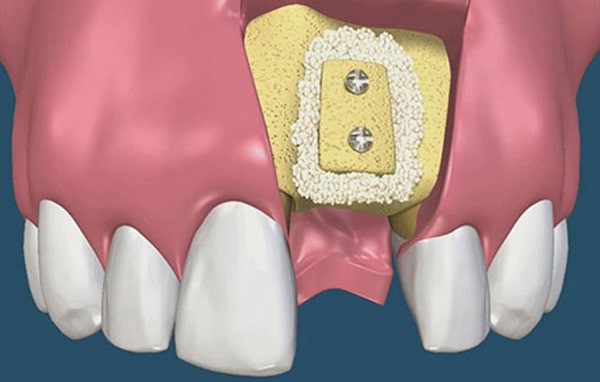Contents
Can I Get Braces if I Have a Dental Implant?
Dental implants consist of a metal post surgically implanted in the jawbone, which acts as a root for a replacement tooth or a bridge. However, many people who have dental implants may also require orthodontic treatment to correct crooked or misaligned teeth. This raises the question: is it possible to have braces on dental implants?
Getting to know about Dental Implants and Braces
Dental Implants
Dental implants are an advanced dental technology that involves a metal post surgically implanted in the jawbone. This post acts as a root for a replacement tooth or a bridge. This procedure not only helps to replace missing teeth but also provides a stable base for the replacement teeth, making them feel and function like natural teeth.
The process of dental implantation is carefully planned and executed by a skilled dental professional, taking into consideration the patient’s dental health, bone density, and overall well-being. Additionally, dental implants can significantly improve the appearance of your smile by restoring the natural shape and contour of your teeth, boosting your confidence and self-esteem. With proper care and maintenance, dental implants can last for many years, providing a long-term solution for missing teeth that is both effective and aesthetically pleasing.
Braces
Braces are a type of orthodontic treatment that is designed to correct crooked or misaligned teeth. They consist of brackets that are attached to the teeth and wires that apply pressure to move the teeth into the desired position.
Braces can be made of various materials, including metal, ceramic, or clear materials, and are typically adjusted by an orthodontist every few weeks to ensure that the teeth are moving properly.
Braces are an excellent option for people who have crooked or misaligned teeth. They can help to correct bite issues, alleviate jaw pain, and reduce the risk of developing gum disease and other dental problems. Braces can also improve the appearance of your smile, boosting your confidence and self-esteem.
Braces on Dental Implants: Can it be Done?
According to Home Dental’s dentists, it is indeed possible to have braces on dental implants, but there are several things to consider.
Firstly, it’s important to understand that orthodontic treatment with implants is generally more complicated than traditional orthodontic treatments. The orthodontist must be extra cautious during the treatment process to avoid damaging the implants, which can be a challenging task.
Additionally, if the implants are still integrating with the jawbone, the orthodontist may need to wait until the bone has fully healed before beginning treatment, which can further prolong the treatment process.
However, despite the challenges, there are many options available for orthodontic treatment with dental implants. For example, clear aligners like Invisalign are a popular option among individuals who are concerned about the appearance of traditional braces. These aligners are custom-made for each patient and are virtually invisible, making them a great choice for people who want to straighten their teeth discreetly.
Another option is to use ceramic or clear brackets with tooth-colored wires. These types of braces are less noticeable than traditional metal braces and provide the same level of treatment. However, they may require extra care during treatment as they are more prone to breakage than traditional braces.
It is important to note that while orthodontic treatment with dental implants can be more complicated, it is definitely worth considering for individuals who want to improve their smile and overall dental health. Consulting with an experienced orthodontist will help determine the best treatment options for each individual case. With the right treatment plan, patients can achieve a beautiful, healthy smile that they can be proud of for years to come.

Benefits of Having Braces on Dental Implants
Improved Appearance of Your Smile
Dental implants can help you achieve a beautiful smile that you can be proud of. Braces are a great way to straighten misaligned teeth, which can not only enhance the appearance of your teeth but also boost your self-confidence. By correcting dental issues such as crooked teeth or a misaligned bite, you can feel more comfortable showing off your smile.
Additionally, braces can help improve your oral health, as straighter teeth are easier to clean and less prone to decay. With the help of braces, you can achieve the straight, beautiful smile that you have always wanted while also improving your overall oral health.
Easier to Maintain Good Oral Hygiene
Cleaning and maintaining your teeth is an essential part of dental care. It can become quite challenging when you have crooked or misaligned teeth. In such cases, food particles and bacteria can get trapped in the nooks and crannies between your teeth, and it can be difficult to clean them effectively.
However, one way to address this issue is to get braces on dental implants. These braces can help straighten your teeth, making it easier to clean them properly. By doing so, you can reduce the risk of developing gum disease, cavities, and other dental problems, which can ultimately impact your overall oral health.
Moreover, having a straight set of teeth can also improve your smile and boost your confidence, making it a worthwhile investment for your dental health and overall well-being.
Alleviate Jaw Pain and Reduce the Risk of Developing Gum Disease
Misaligned teeth can cause a variety of problems that go beyond just cosmetic concerns. In addition to the obvious esthetic issues, misaligned teeth can also lead to jaw pain and difficulty chewing, which can impact your ability to eat and enjoy your food.
By correcting bite issues through orthodontic treatment, such as braces on dental implants, you can not only alleviate jaw pain but also reduce the risk of developing gum disease and other dental problems. This is because when the teeth are properly aligned, it’s easier to clean them, which in turn decreases the likelihood of plaque buildup and other oral health issues.
Which Treatment Should be Done First, Braces or Dental Implants?
According to dental professionals, there is no one-size-fits-all answer to this question. The order in which you receive dental implants and braces will depend on your individual case and treatment goals. However, there are some general guidelines that can help determine the best treatment plan for you.
If You Have Missing Teeth
If you have missing teeth that require dental implants and braces, it is essential to understand the proper order of treatment. In most cases, dental implants should be placed first, followed by the braces.
This is because dental implants need a stable base to support the replacement teeth, and the teeth need to be in their final position before the implant is placed. By having the implant first, you are ensuring that the teeth are in their proper position, and the implant will be placed correctly to support the replacement teeth.
Additionally, it’s worth noting that the placement of dental implants can take anywhere from a few weeks to several months to complete, depending on the individual case. During this time, your dentist may recommend a temporary solution, such as a removable partial denture or a bridge, to fill the gap while the implant is healing.
Once the implant has healed and fused with the jawbone, the braces can be used to adjust the position of the remaining teeth. This process can take several months to a few years, depending on the complexity of the case. However, by following the proper order of treatment, you can ensure that you achieve the best possible outcome for your oral health and smile.
If You Have Misaligned Teeth
If you have misaligned teeth and require both dental implants and braces, it is generally recommended to have the braces placed first.
This is because the braces can be used to straighten the teeth before the implants are placed. Once the teeth are in their final position, the dental implants can be placed to fill in any missing teeth.
It is important to note that the process of getting braces can take several months to a few years, depending on the severity of your misalignment. During this time, you will need to visit your orthodontist regularly for adjustments to your braces. Additionally, after the braces are removed, you will need to wear a retainer to ensure that your teeth stay in their new position.
Once your teeth are properly aligned, your dentist will be able to assess whether you are a good candidate for dental implants. If so, the process of getting dental implants will involve a surgical procedure where small posts are placed into your jawbone to support replacement teeth. This process can take several months to complete, as your jawbone needs time to heal and the replacement teeth need to be custom made to fit your mouth.
Overall, the process of getting both braces and dental implants can take a significant amount of time, but the end result is a healthy and beautiful smile that will last a lifetime.
It is important to consult with a dental professional to determine the best treatment plan for your needs. With proper care and maintenance, dental implants and braces can provide a long-term solution for missing teeth and misaligned teeth, improving your oral health and the appearance of your smile.
Conclusion
In conclusion, it is possible to have braces on dental implants. The process may be more complicated than traditional orthodontic treatment, but it can provide significant benefits for individuals with missing teeth and orthodontic issues. If you have dental implants and are considering orthodontic treatment, talk to your orthodontist to determine the best treatment plan for your needs.















